A manifold valve is an essential component of pressure and differential pressure transducers. The main function of a manifold valve is to block or isolate the fluid flow to isolate process media from pressure instrumentation. The inclusion of a valve manifold in a tool helps it to be replaced or calibrated without requiring a shutdown. In this article, we will learn about different types of manifold valves.
What is a Manifold Valve?
A valve manifold is a hydraulic system component that consists of one or more block or isolation valves. Common valves that form a valve manifold are ball, needle, bleed, and vent valves. A block and bleed system in the form of a manifold valve keeps the upstream fluid from coming into touch with the downstream components by separating the fluid flow in the system.
Types of Manifold Valves
Depending on the design configuration and the number of valves, manifold valves are classified as follows:
- 2-way valve manifolds,
- 3-way valve manifolds, and
- 5-way valve manifolds.
2-Way Valve Manifold
A 2-way manifold valve or 2-valve manifold is designed in a single block with a combination of an isolation valve and a calibration/vent (bleed) valve. They have a male or female screwed inlet and outlet ports. The block valve is designated with a blue handle, whereas the bleed valve is designated with a red handle.
They are usually produced in 316 stainless steel with standard PTFE valve packing. 2-way valves are available as in-line type, L-shaped, or Y-shaped configurations.
3-Way Manifold Valve
A 3-valve manifold or 3-way valve manifold consists of two block valves and one equalizing valve. Differential pressure transmitters are typical examples that use 3-way manifold valves. The block valves are identified with blue handles whereas the equalization valve is usually provided with a green handle. During normal operation, the block valves are open and the equalizing valve is closed.
The block valves in a 3-way manifold valve provide instrument isolation. The equalizing valve is positioned between the high and low process connections of the pressure instrument and it provides equal pressures on both sides.
The 3-valve manifold is rarely utilized in the oil and gas industry due to the lack of a test connection. Some 3-valve manifolds are provided with a blocked test connection.
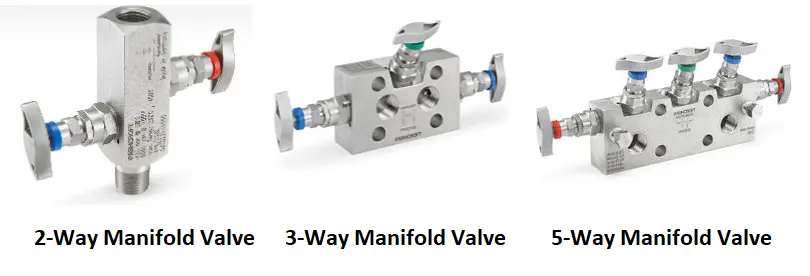
5-Way Manifold Valve
A 5-way manifold valve or 5-valve manifold has two block valves, one equalizing valve, and two vent or test valves. The block valves on the high and low-pressure sides are designated with blue handles, the equalization valve in a green handle, and the bleed valves are designated with red handles.
During normal operation, the block valves remain open but the bleed and equalizing valves are kept closed. A typical example of the use of a 5-way manifold valve is a differential pressure transmitter. To test the transmitter’s zero, the block valve is closed and the equalizing valve is opened. To calibrate the transmitter for 3 or 5-point calibration, the test valve is connected to a pressure generator once the pressure has been equalized.
Characteristics of a Manifold Valve
The typical characteristic of a manifold valve are:
- Anti-rotational thrust brush to provide pressure-tight sealing, consistent packing compression, and minimum cold flow channels.
- Bonnet/body washer with on-site bonnet retrofitting with a 100% re-sealing guarantee.
- T bar for ease of operation.
- Dual cap.
- Gland adjuster lock nut.
- Adjustment of the gland packing to compensate for gland wear.
- Anti-blowout spindle with high-quality micro mirror stem finishing to provide positive gland sealing.
- Gland packing with the least amount of air adjustment for optimum sealing.
- A bubble-tight shutoff spindle tip. It ensures leakage-free performance and downstream functional safety for the user.
Manifold Valve Body Type
Manifold valves are available in two basic body styles; horizontal style manifold and vertical style manifold. The actual orientation of the manifold valve’s main body is decided by these styles.
Mounting of Manifold valves
Manifold valves are mounted in two styles of manifold installation. they are
- Direct mounting, and
- Indirect mounting or distant mounting
Direct Mounting
In the direct mount style, the manifold valve is directly mounted to the pressure instruments. Flange and threaded connectors are generally used in direct-mount valves.
Direct Mount Manifold valve provides the following advantages:
- Less expensive maintenance and installation
- Fewer leak points
- Integrated valves
- The system is still hard piped
Indirect mounting or Distant Mounting
Also known as remote mounting manifold, indirect mounting allows the manifold valve installation away from the instruments using threaded connections. Flexible or rigid piping is generally used to connect a pressure instrument to the manifold.
The advantages that indirect mounting serves are:
- Easier maintenance and installation
- The piping is mounted to the transmitter
- Uses standard instrument manifolds
- Uses tubing and tube fittings
Benefits of Using a Valve Manifold
Valve manifolds find a range of applications, starting from small mobile devices to large industrial complexes. There are various advantages that manifold valve provides to the system. Some of the common benefits are:
- Reduction of pressure and heat loss due to shorter flow pathways.
- Increasing energy efficiency.
- Compact installation.
- Lower installation expenses.
- The number of fluid connections is reduced.
- Oil leaks and maintenance are reduced due to fewer connections.


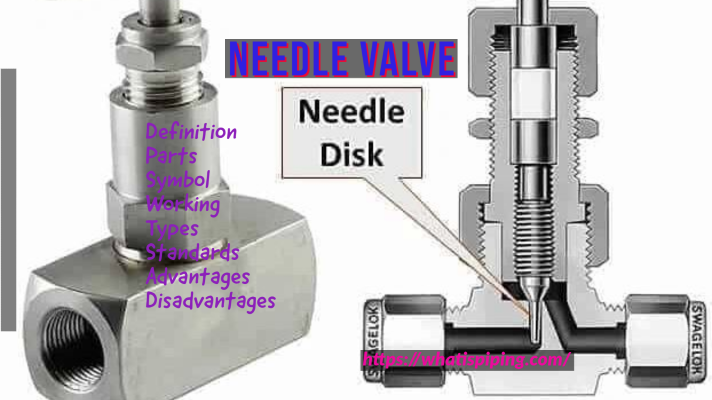



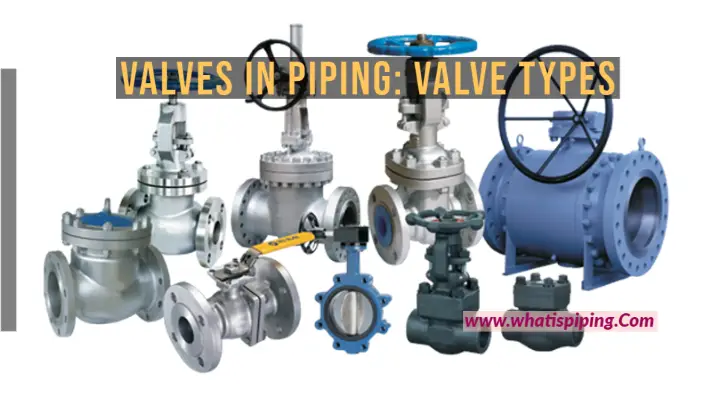
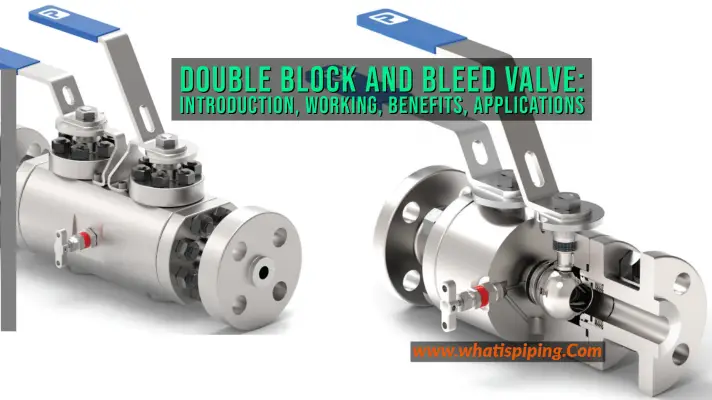
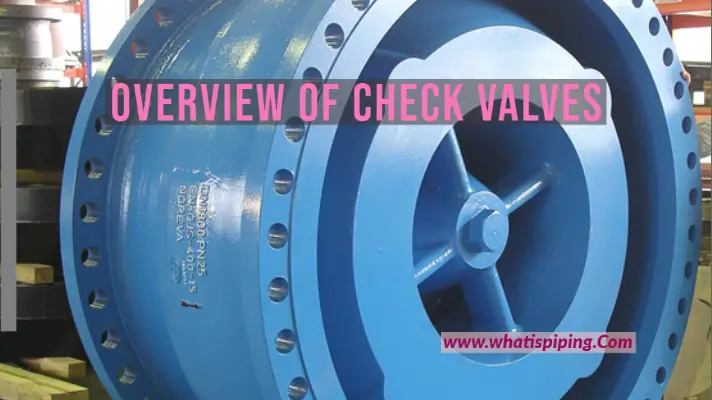
I like that you talked about how a manifold valve is an essential component of pressure and differential pressure transducer. I was looking at a catalog of industrial parts and tools earlier and I saw a valve manifold box in it. It seems like a pretty complicated item, which is pretty interesting.